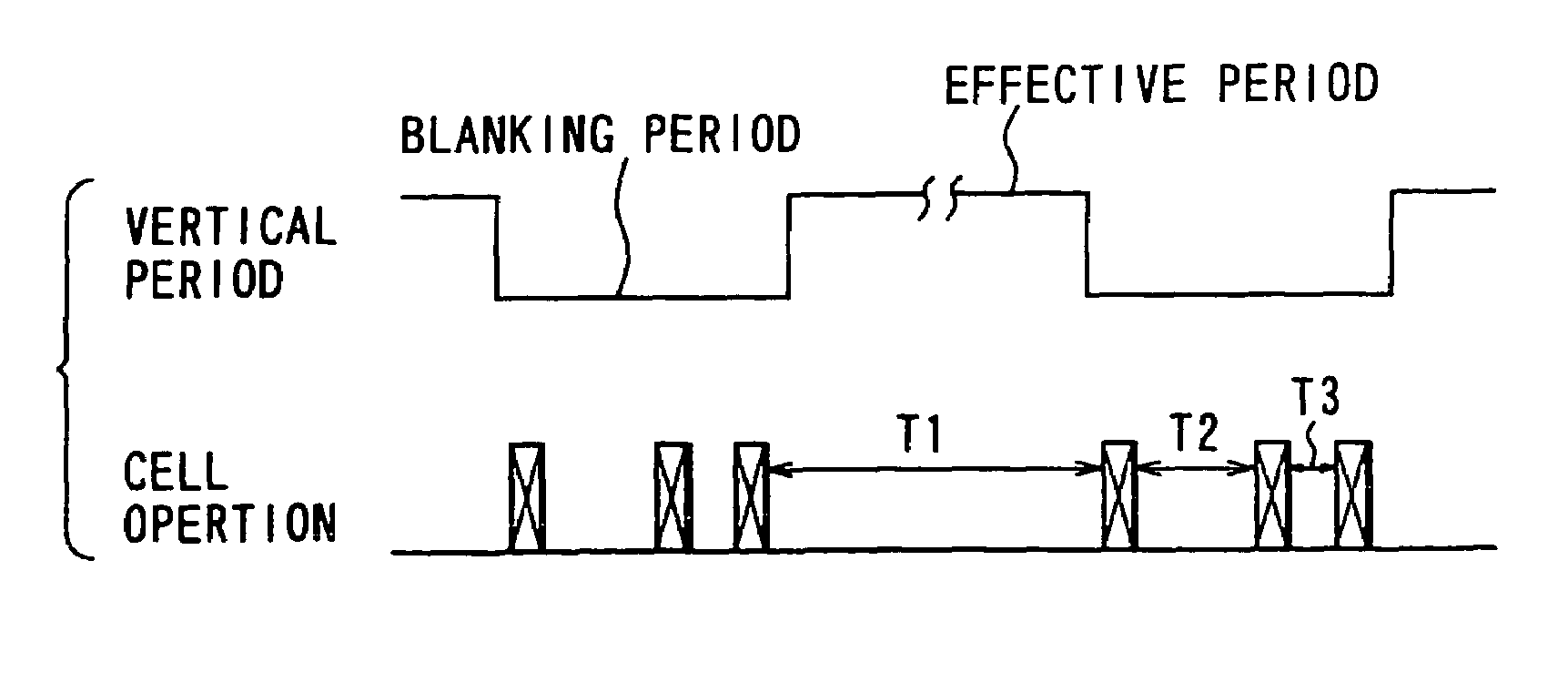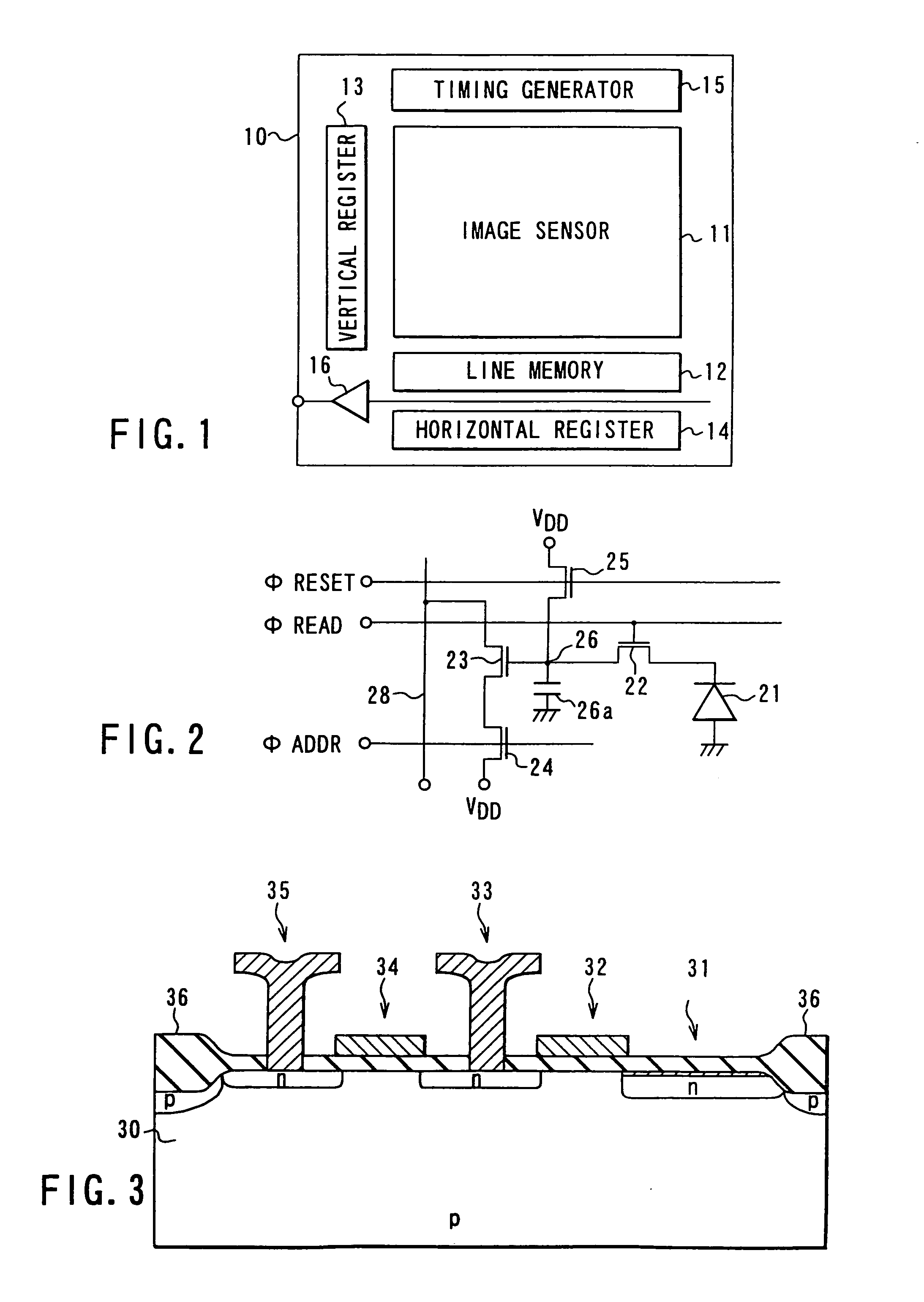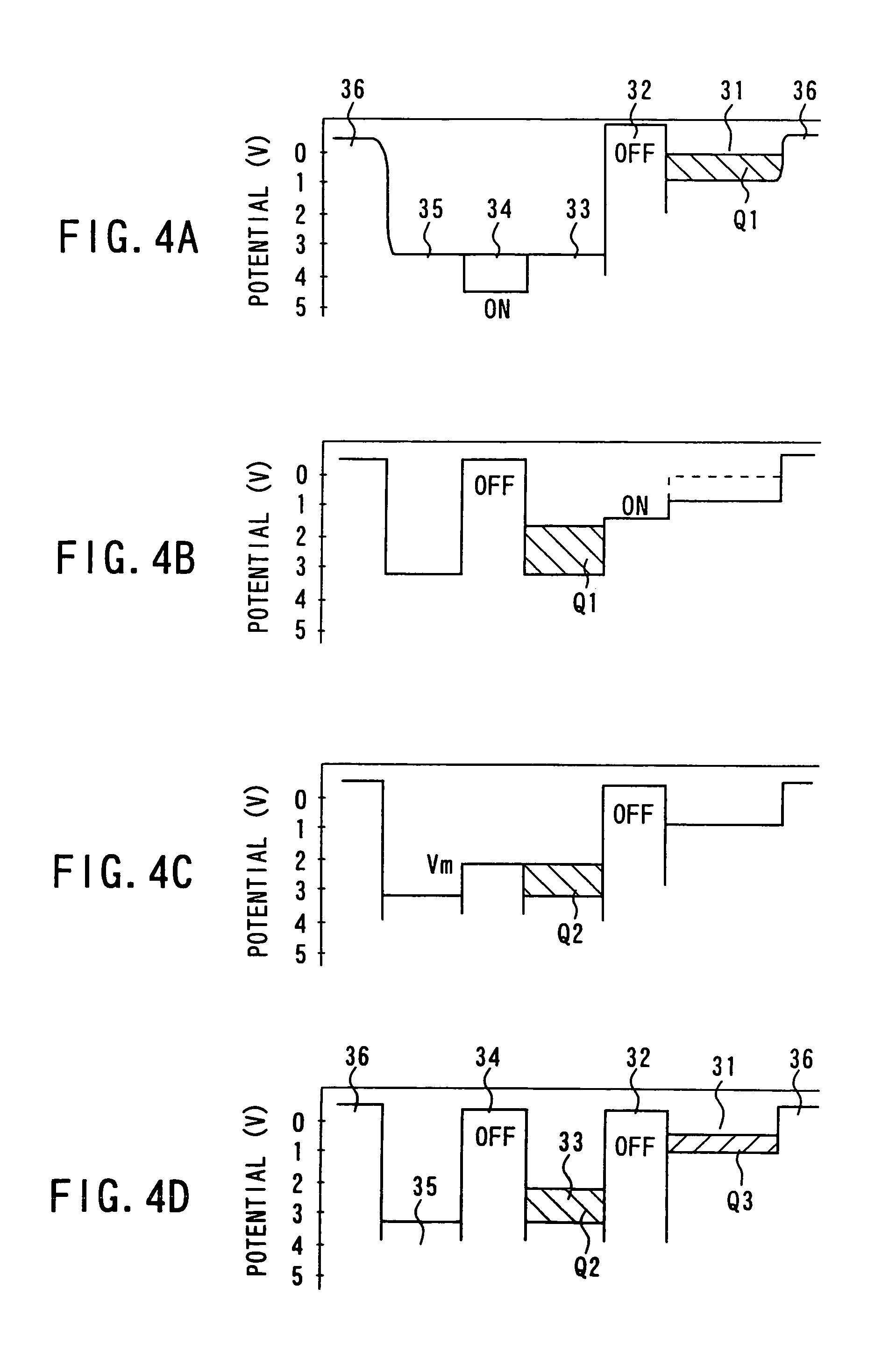Amplification type image pickup apparatus and method of controlling the amplification type image pickup apparatus
a pickup apparatus and amplification technology, applied in exposure control, radio frequency control devices, instruments, etc., can solve the problem of reducing the dynamic range of the image pickup apparatus, and achieve the effect of increasing the dynamic rang
- Summary
- Abstract
- Description
- Claims
- Application Information
AI Technical Summary
Benefits of technology
Problems solved by technology
Method used
Image
Examples
first embodiment
[0041]FIG. 1 is a block diagram showing the main section of a typical solid-state image pickup apparatus of amplification type, which is the first embodiment of the invention.
[0042]As FIG. 1 shows, the image pickup apparatus comprises an image sensor 11, a line memory 12, a vertical register 13, a horizontal register 14, a timing generator 15, and an on-chip amplifier 16. The components 11 to 16 are provided on the semiconductor substrate 10.
[0043]The image sensor 11 has a plurality of unit cells (not shown) and a plurality of vertical signal lines (not shown). The unit cells are arranges in rows and columns. The vertical signal lines extend along the columns of unit cells. Each unit cell accumulates signal charge representing data (electrical information). The data is read to a vertical signal line when the vertical register 13 outputs a control signal to the unit cell, in response to a timing signal supplied from the timing generator 15. The data, thus read, is stored into the lin...
second embodiment
[0064]The second embodiment of the invention, which is a solid-state image pickup apparatus of amplification type, will be described with reference to the timing charts of FIGS. 7 and 8. The second embodiment is designed for use in electronic still cameras having a mechanical shutter each.
[0065]FIG. 7 explains how this solid-state image pickup apparatus operates if the photodiode provided in each unit cell is of incomplete transfer type, such as an np-type photodiode.
[0066]Assume that the image sensor pick up an ordinary image and that the unit cells of the image sensor generates signals. In this case, the signals are read from the image sensor in units of frames. After reading the signals from the image sensor, the image sensor is reset, as is required because the photodiodes are of incomplete transfer type, such as np-type photodiodes. The signal charges are thereby extracted from the photodiodes, thus skimming bias charges therefrom.
[0067]After resetting the image sensor, the mec...
third embodiment
[0070]The third embodiment of this invention, which is also a solid-state image pickup apparatus of amplification type, will be described with reference to the timing charts of FIG. 9. The unit cells of the image sensor incorporated in the third embodiment have a structure similar to the one depicted in FIG. 2.
[0071]As shown in FIG. 9, signals are read from the unit cells of the Xth row and (X+Y)th row during the same horizontal blanking period. During the next horizontal blanking period, signals are read from the unit cells of the (X+1)th and (X+1+Y)th row.
[0072]Assume that T rows of unit cells serve to accumulate signal charges for one frame. In this case, the signal accumulated in any unit cell for the period corresponding to (T−Y) rows is read into the line memory during a horizontal blanking period, and the signal accumulated in the same unit cell for the period corresponding to Y rows is read into the line memory during another horizontal blanking period. These two signals are...
PUM
 Login to View More
Login to View More Abstract
Description
Claims
Application Information
 Login to View More
Login to View More - R&D
- Intellectual Property
- Life Sciences
- Materials
- Tech Scout
- Unparalleled Data Quality
- Higher Quality Content
- 60% Fewer Hallucinations
Browse by: Latest US Patents, China's latest patents, Technical Efficacy Thesaurus, Application Domain, Technology Topic, Popular Technical Reports.
© 2025 PatSnap. All rights reserved.Legal|Privacy policy|Modern Slavery Act Transparency Statement|Sitemap|About US| Contact US: help@patsnap.com



